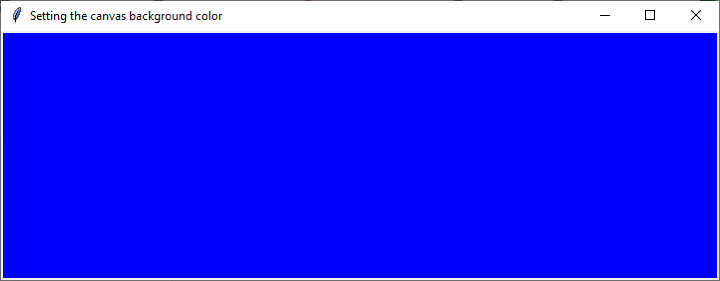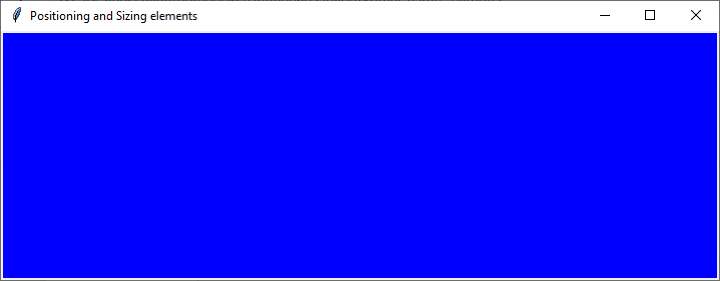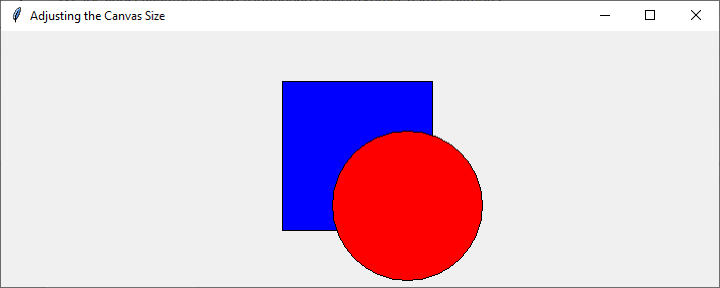
 Data Structure
Data Structure Networking
Networking RDBMS
RDBMS Operating System
Operating System Java
Java MS Excel
MS Excel iOS
iOS HTML
HTML CSS
CSS Android
Android Python
Python C Programming
C Programming C++
C++ C#
C# MongoDB
MongoDB MySQL
MySQL Javascript
Javascript PHP
PHP
- Selected Reading
- UPSC IAS Exams Notes
- Developer's Best Practices
- Questions and Answers
- Effective Resume Writing
- HR Interview Questions
- Computer Glossary
- Who is Who
How to remove white space from a Python\'s Tkinter canvas?
One of the essential components in Tkinter is the canvas, which allows for drawing and displaying graphics, shapes, and images. However, when working with a canvas, you might encounter a common issue: white space surrounding the drawn elements. This white space can affect the aesthetics and layout of your GUI.
In this article, we will explore different techniques to remove white space from a Tkinter canvas and achieve a clean and visually appealing interface.
Understanding the White Space Issue in Tkinter Canvas
Before we delve into the solutions, let's understand why white space appears in a Tkinter canvas. By default, when a canvas is created, it is set to expand and fill its parent container, such as a window or frame. However, if the canvas doesn't contain any elements or if the elements are not positioned properly, the canvas will appear as empty white space.
Additionally, when you add elements to the canvas, they might not automatically fill the entire canvas area. The canvas treats each element as an independent object and does not automatically adjust their positions or sizes to fill the available space. As a result, you may end up with unwanted white space around your drawn elements.
Now, let's explore different techniques to remove white space from a Tkinter canvas.
Setting the Canvas Background Color One way to eliminate white space is by setting the canvas background color to match the desired background of your GUI. By doing so, any empty areas in the canvas will blend with the surrounding background, giving the illusion of white space removal.
Example
import tkinter as tk
root = tk.Tk()
root.title("Setting the canvas background color")
root.geometry("720x250")
canvas = tk.Canvas(root, bg="blue")
canvas.pack(fill="both", expand=True)
root.mainloop()
In this code snippet, we create a canvas widget and set the bg parameter to your desired background color. By using the fill="both" and expand=True options when packing the canvas, it will expand to fill the available space within its parent container. The canvas will now appear as if the white space has been removed.
Output

Properly Positioning and Sizing Elements To remove white space, it's important to properly position and size the elements within the canvas. This ensures that the elements fill the canvas area, eliminating any unwanted empty spaces.
Example
import tkinter as tk
root = tk.Tk()
root.title("Positioning and Sizing elements")
root.geometry("720x250")
canvas = tk.Canvas(root)
canvas.pack(fill="both", expand=True)
# Draw a rectangle that fills the canvas
canvas.create_rectangle(720, 250, canvas.winfo_width(), canvas.winfo_height(), fill="blue")
root.mainloop()
In this example, we create a canvas and use the create_rectangle method to draw a rectangle. By setting the rectangle's coordinates to (720, 250, canvas.winfo_width(), canvas.winfo_height()), we ensure that the rectangle spans the entire canvas area. This approach ensures that the canvas is fully covered, leaving no white space.
Output

Adjusting the Canvas Size Another way to remove white space is by adjusting the canvas size to fit the drawn elements tightly. This technique involves dynamically calculating and setting the canvas size based on the dimensions of the elements.
Example
import tkinter as tk
def adjust_canvas_size():
# Get the bounding box of all elements on the canvas
bbox = canvas.bbox("all")
# Update the canvas size based on the bounding box dimensions
canvas.configure(width=bbox[2], height=bbox[3])
root = tk.Tk()
root.title("Adjusting the Canvas Size")
root.geometry("720x250")
canvas = tk.Canvas(root)
canvas.pack()
# Draw your elements here
rectangle = canvas.create_rectangle(50, 50, 200, 200, fill="blue")
circle = canvas.create_oval(100, 100, 250, 250, fill="red")
# Call the adjust_canvas_size function
adjust_canvas_size()
root.mainloop()
In this example, we define the adjust_canvas_size function, which retrieves the bounding box of all the elements on the canvas using the bbox method. The bbox method returns a tuple containing the x and y coordinates of the top-left corner and the x and y coordinates of the bottom-right corner of the bounding box. We then use these dimensions to update the width and height of the canvas using the configure method.
After defining the function, we create a Tkinter window with a canvas. We draw a rectangle and a circle on the canvas using the create_rectangle and create_oval methods, respectively. Finally, we call the adjust_canvas_size function to dynamically adjust the canvas size based on the drawn elements.
Output
By executing this code, the canvas will resize itself to fit tightly around the rectangle and circle, eliminating any unnecessary white space.

Conclusion
Removing white space from a Tkinter canvas is crucial for achieving a clean and visually appealing graphical user interface. By setting the canvas background color and properly positioning and sizing the elements, adjusting the canvas size, you can effectively eliminate white space and create a more polished GUI.
Experiment with these techniques and choose the one that best suits your specific needs and design preferences. Remember to consider the overall layout and arrangement of your elements to ensure a balanced and aesthetically pleasing interface. With a little attention to detail and utilizing the capabilities of Tkinter, you can create GUIs with a seamless and professional look, free from unwanted white space.

